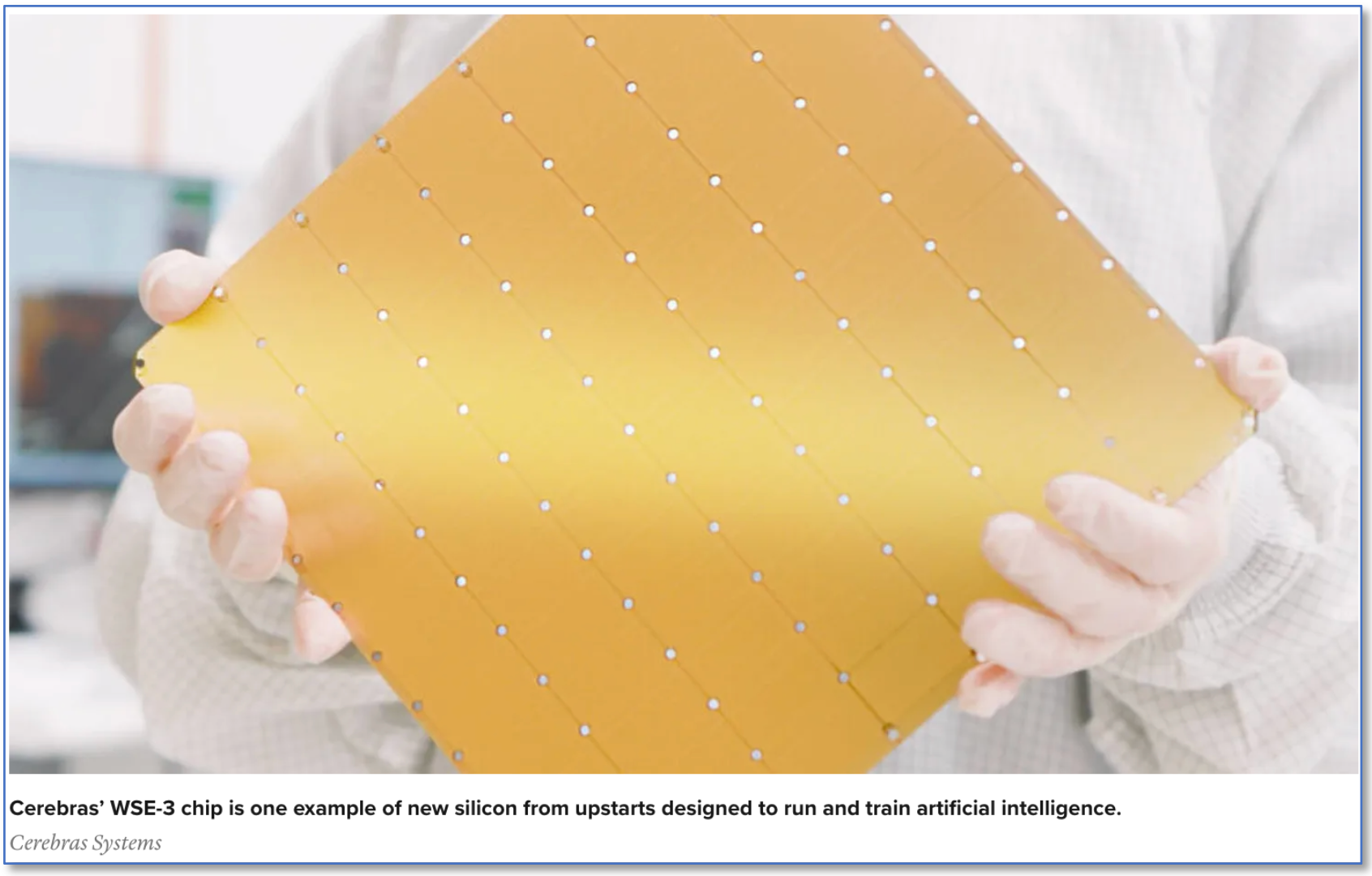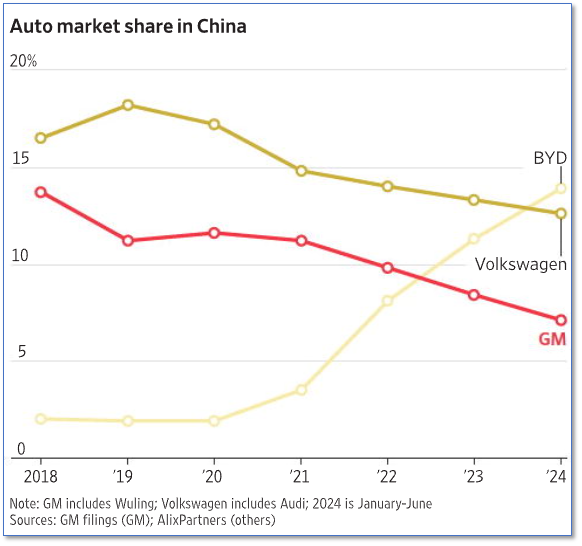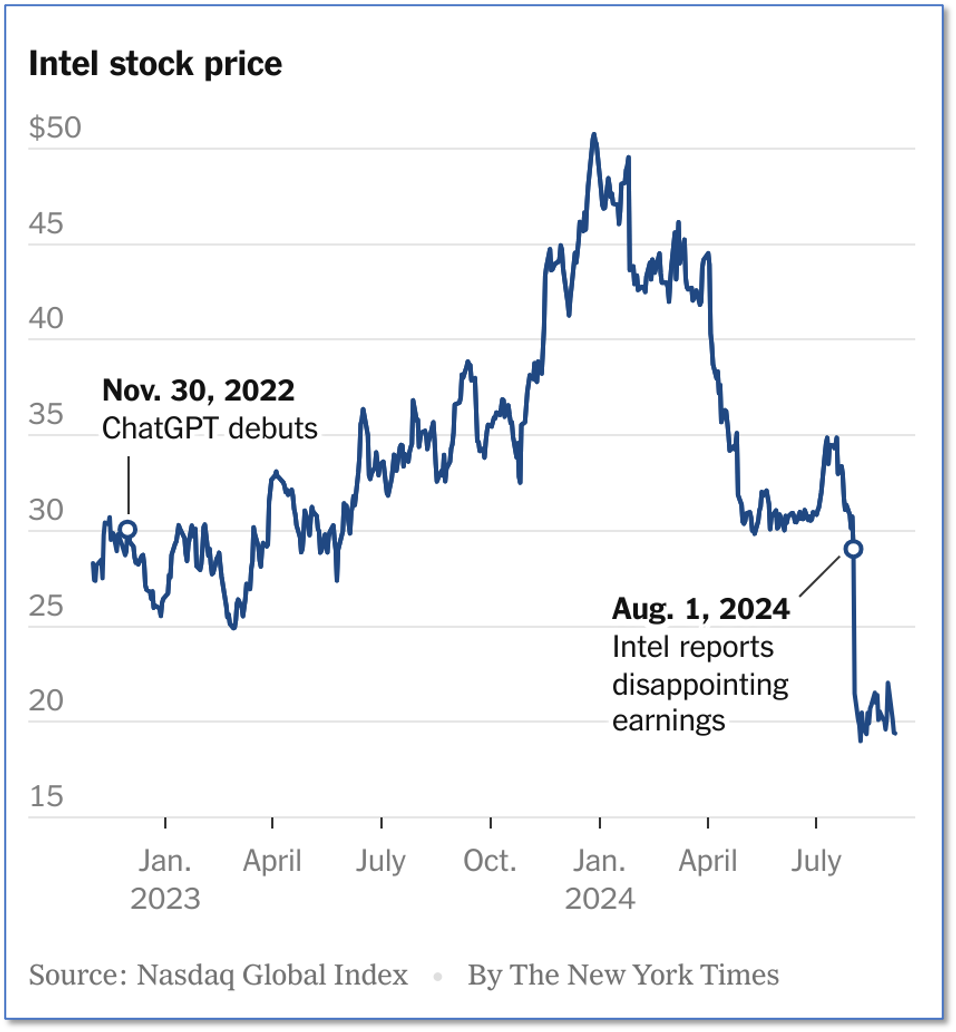Newsroom
Explore our newsroom for our weekly wreck, press releases, and trending topics.
A New Paradigm Emerges
Overview
Historically, when an entrepreneur had a great idea, they would design a product, manufacture it, and sell it to as broad an audience as possible. That model (or paradigm) is breaking down, with massive consequences.

Some History
For years, Intel was lauded as the ideal company, with its dominance of the chip industry and therefore its massive margins. When there was an important conference on technology, the premier speaker was always Andy Grove, who was lauded as the example for all sophisticated managers to follow.
Like many other areas, it worked until it didn’t. The development that broke Intel’s lock on the chip-making industry was the separation of chip development from chip manufacturing. ARM focused on designing chips and developed a more efficient, focus-use chip, which was subsequently manufactured by a specialty fabricator (“fab” in industry parlance), TSMC, which over time became the global leader in the manufacturing process.

Bringing things up to date, a company like Nvidia licenses designs from ARM, uses TSMC for manufacturing but has focused on the massive combination of sub-chips to create one of the fastest chips on the market and is now dominating chips for data centers. Not to be outdone, both AMD and Cerebras are introducing supposedly superior chips. Given the massive sums being spent on data centers to support AI and other initiatives, the race to create the superior chip is very relevant.
Another Example
These developments are not limited to the chip industry. For the past decade, Apple has dominated the mobile phone industry without manufacturing its own phones. Apple has focused on the design and marketing aspects and left the manufacturing to Foxconn, which, with the support of Apple, has become one of the leading firms in the contract manufacturing space.
Emerging Shift
The latest development is that Foxconn, and probably others, have announced plans to enter the contract manufacturing business for automobiles, which will be a sea change for an industry facing major disruptions. For an industry that was fairly stable for decades, the past couple of years have seen the emergence of electric vehicles as a major alternative, and now, for some, the split of manufacturing:
Foxconn Transforms Automobile Industry with Launch of Open Platform for Electric Vehicles and Announces Pioneering R&D Programs In Taiwan¹

Regarding electric vehicles, a battle is brewing on two fronts. The first is whether Tesla, with its hyper-automated assembly lines, will dominate, or if BYD, with its focus on low-cost production, will emerge victorious. (Given the fact that there are multiple manufacturers currently, perhaps both can thrive.) The second front concerns leadership in self-driving vehicles and robo-taxis. The major competitors currently are Tesla (yet again) and Waymo. The market was not impressed with Tesla’s unveiling of its sub-$30,000 robo-taxi prototype and the more expensive robo-van, but it may be too early to judge. As for Waymo, it seems to be an add-on to existing vehicles, which may hinder its ability to gain market access.
Lessons Learned
A fair question might be why contract manufacturing is more efficient and in which industries it might work. Our view is that when significant capital is invested in manufacturing (such as is the case with the $10B+ typical chip fabrication plant²), it makes sense to ensure that the capacity utilization is as high as possible. Additionally, as volume increases, efficiencies also increase. The “trick,” perhaps, is to make sure that the fab operator has as much volume as possible. For the fab customer, they are relieved of the burden of operating the fab.
Note 1 - Business models are adjusted to opportunities. Given the massive purchasing power of Apple, Foxconn appears to be conducting little manufacturing for other phone companies.
Note 2 – Tesla, has chosen to keep its plants presumably believing that manufacturing is a key function of its operations and that it can best obtain the efficiencies it needs. The following headline from Bloomberg is telling (source Bloomberg Jan. 24, 2022): Tesla Now Runs the Most Productive Auto Factory in America.³
Post Mortem
Back to Intel, while the company is very much alive, the reality is that the company has lost its leadership position (déjà vu IBM?). There are numerous very smart strategic thinkers at Intel, but perhaps they underestimated the threat posed by the changes in business models. Ironically, Intel has made adjustments by spinning off some of its manufacturing capacity, but from our perspective, it is too little, too late. In the hyper-competitive chip industry, leadership rarely lasts long, and the current leaders might be replaced by the next technology shift, such as quantum computing, a discussion of which will have to wait for another installment.






